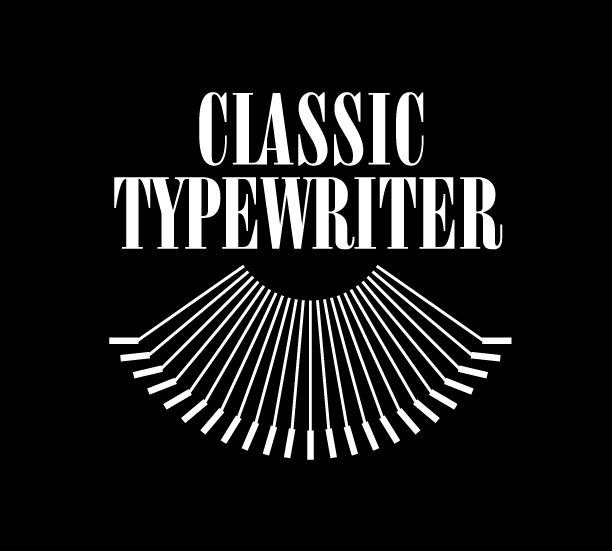Ultimate Guide to Typewriter Repair: Tips to Restore Your Vintage Machine
Vintage typewriters are not only beautiful pieces of history but also functional tools for writing enthusiasts. Keeping them in working order requires maintenance and occasional repairs. This guide provides detailed insights into typewriter repair to help you restore and maintain your machine with confidence.
1. Assess the Condition of Your Typewriter
Begin by identifying the machine’s specific issues. Common problems include:
Sticking keys
Letters not aligning properly
Carriage not advancing
Ribbon feed problems
Difficulty feeding paper
Margin release stuck or not releasing
Draw band hanging loose
Tab or tab set and clear keys not working
Ribbon not advancing
Rust or stuck parts
Careful observation will help pinpoint what needs repair or adjustment.
2. Essential Tools and Lubricants for Typewriter Repair
Having the right tools and materials can make or break your repair success:
Bluecreeper Penetrating Lubricant: Excellent for freeing stuck type slugs or jammed parts.
Liquid Bearings Oil: A precision oil perfect for lightly lubricating moving parts.
Screwdriver set: For adjustments and careful disassembly.
Compressed air and soft brushes: To remove dust and dirt.
Isopropyl alcohol (90% or higher): For cleaning type slugs and metal parts.
Rubber rejuvenator: Restores platen rollers and feed rollers.
Wax car polish: For glossy finishes (avoid this on crinkle paint).
Important Note: Avoid over-oiling your machine. Excess oil attracts dirt and can gunk up the mechanism.
3. Cleaning Your Typewriter
Regular cleaning can resolve many common issues:
Dust and Dirt Removal: Use compressed air and a soft brush to remove loose debris.
Metal Part Cleaning: Clean type slugs and other components with alcohol to remove ink and grime.
Body Polishing:
For glossy finishes, use a small amount of wax car polish for shine.
Avoid wax on crinkle paint; instead, clean it with a damp microfiber cloth.
4. Common Typewriter Issues and How to Fix Them
Carriage Not Advancing
Broken Drawband: This is a common cause. Check if the band connecting the carriage to the spring is intact. You may be able to repair or replace the drawband yourself unless the spring mechanism is broken.
Escapement Issues: If the escapement mechanism (which controls the incremental movement of the carriage) isn’t working, the repair is more complex and might require professional help.
Key or Margin Problems: Check if the tab set key, tab key, or margin release is stuck or not fully released. Resolving these may restore carriage movement.
Upper and Lower Case Misalignment
Adjusting upper and lower case alignment is relatively simple. Most typewriters have adjustment screws for this purpose.
Caution: If letters are higher or lower than they should be, avoid bending the typebar to correct alignment. This is an advanced repair best left to experts, as bending improperly can permanently damage the typebar.
Sticking Keys or Jammed Type Slugs
Clean type slugs with isopropyl alcohol to remove grime.
Apply Bluecreeper to free stuck keys and work them gently until smooth.
5. Cautions for Disassembly
Disassembling your typewriter may seem like a good idea, but proceed with extreme caution:
Complex Mechanisms: Many typewriter users dismantle their machines only to discover they can’t reassemble them. This can render your machine unusable.
Best Practice: If you decide to take the machine apart, have another typewriter of the same model as a reference to guide you during reassembly. Taking pictures at each step can also be helpful.
Spring Sensitivity: Springs are particularly tricky. Avoid using tools like queue tips near springs, as they can catch and pull springs out of place. Reattaching a spring is difficult and can require professional tools or expertise.
6. Preventative Maintenance
Keep your typewriter in good condition by following these practices:
Dust regularly with a soft brush or compressed air.
Perform deep cleaning and lubrication every six months.
Store the machine in a dry, covered environment to protect against moisture or debris.
7. When to Seek Professional Help
For issues like broken springs, escapement repairs, or significant mechanical damage, professional repair services or typewriter specialists are often the best option. Attempting these repairs at home can sometimes cause more harm than good.
8. Frequently Asked Questions
Q: What causes my carriage to stop advancing?
A: It could be due to a broken drawband, a malfunctioning escapement, or stuck tab or margin release keys. Start by inspecting these components.
Q: Can I bend typebars to adjust alignment myself?
A: It’s not recommended. Aligning typebars by bending is tricky and requires skill. Seek expert assistance for this repair.
Q: How can I clean and polish the body without damaging it?
A: Use wax car polish for glossy finishes and a damp microfiber cloth for crinkle paint. Avoid using abrasive cleaners.
Final Thoughts
Repairing a vintage typewriter can be a rewarding project that preserves a functional piece of history. By following these tips, using lubricants like Bluecreeper and Liquid Bearings, and practicing caution during repairs, you can extend the life of your beloved machine.
Would you like guidance on sourcing replacement parts or professional repair services? Let me know!

